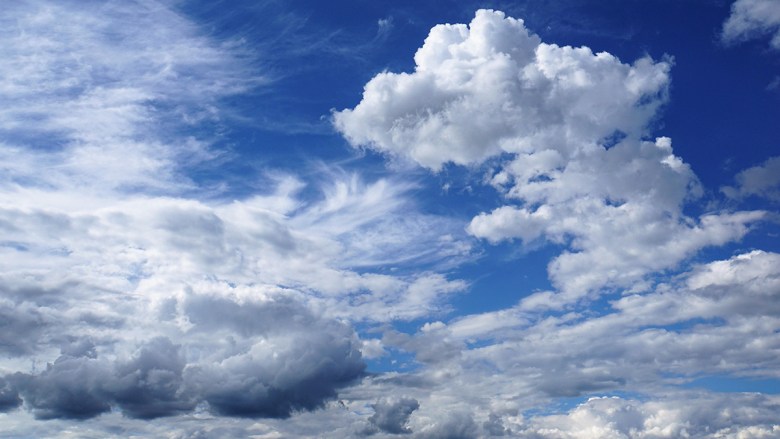
Tiny aerosol particles in the lowest layer of the atmosphere play a critical role in the formation of clouds and reflect solar radiation back into space, cooling the planet. Scientists have not been able to fully account for how all of these particles form and behave. Now, researchers have discovered that they can appear when a mass of air from the stratosphere dips down into the troposphere. The finding will deepen scientists’ understanding of the chemistry and physics of the atmosphere and may help inform climate models.
Small particles act as nuclei that accumulate water, become clouds, and sometimes produce rain. “The amount of rain a cloud can make is dependent on the size of the droplets and the rate at which they grow,” said Hugh Coe, an atmospheric scientist at the University of Manchester who was not involved with the research.
“It’s vital that we get the details of this process right.”
Particle characteristics factor into the intensity and distribution of global precipitation. Similarly, the size, distribution, and other qualities of atmospheric aerosols influence how much solar radiation they reflect. The chemistry of the particles also determines their fate, said Jian Wang, an aerosol scientist at Washington University in St. Louis. Some particles are more hydrophilic, meaning they are more likely to attract water and become cloud droplets. Others will have less affinity for water and are unlikely to become droplets, unless they become very large.
Knowing where these particles are and how they come to be is therefore key for understanding Earth’s changing climate. “It’s vital that we get the details of this process right,” Coe said.
Airborne Measurements
Wang and his colleagues were poring over airborne measurements of air temperature, humidity, and composition from two NASA flight campaigns when they noticed tiny aerosol particles out of place. The particles’ small size indicated they had been formed very recently, but they were in the upper part of the troposphere within dry, ozone-filled air, where atmospheric chemists would not have predicted them to be.
Scientists already knew of a mechanism of particle formation in the troposphere: Storm systems lift gases emitted by natural processes and human activities from ground level to high in the atmosphere. These aerosols, which make city skylines look hazy on polluted days, react and form products that condense to form new particles or add to existing ones. But they are found in deep convective clouds where conditions are humid. Wang and his colleagues spotted these particles in their data—no surprise there.
The other young particles the group found, however, were far from these deep convective clouds. Puzzlingly, these particles were found in conditions that resembled those of the stratosphere.
Scientists gained new insight into the formation of particles in the atmosphere by analyzing data from NASA science flights, including excursions by this DC-8 as part of the Atmospheric Tomography Mission (ATom). Credit: NASA
The boundary between the troposphere and the overlying stratosphere is not an impenetrable line. The researchers think the young particles form when huge masses of air from the stratosphere descend into the troposphere, creating a wavelike fold.
Wang’s team examined the conditions in these mixed regions, which can be hundreds of kilometers across. In folds where new particles were forming, sulfur dioxide (SO2) and hydroxyl radical (OH) concentrations were also relatively high. Under these conditions, Wang and his colleagues theorized, sunlight catalyzes the breakdown of ozone, producing an oxygen atom that reacts with water to form hydroxyl radicals. They, in turn, oxidize SO2 to produce sulfuric acid. Sulfuric acid promotes new particle formation.
Wang said he and his colleagues are not sure where the SO2 is coming from. Monsoons could have driven SO2 pollution from sources such as coal-fired power plants in Southeast Asia into the upper troposphere and lower stratosphere. Coe said there are possible natural sources, too, such as volcanoes.
“It massively helps our understanding of the distribution of particles.”
The study was published in the journal Science.
This work deepens researchers’ understanding of the atmosphere, Coe said. “To accurately represent the atmosphere’s state, this process needs to be considered,” he explained. “It massively helps our understanding of the distribution of particles.” However, it’s not yet clear what the broader implications will be for climate models.
Adding new parameters to models also adds computational costs. So modelers will need to determine whether adding this particle-generating mechanism to their models is worthwhile—doing so may or may not improve their predictive power. “The question is, How important is this mechanism compared to the others?” Coe said.
—Katherine Bourzac, Science Writer
This news article is included in our ENGAGE resource for educators seeking science news for their classroom lessons. Browse all ENGAGE articles, and share with your fellow educators how you integrated the article into an activity in the comments section below.
Citation: Bourzac, K. (2024), A folding troposphere may help drive cloud formation, Eos, 105, https://doi.org/10.1029/2024EO240353. Published on 15 August 2024.
Text © 2024. The authors. CC BY-NC-ND 3.0Except where otherwise noted, images are subject to copyright. Any reuse without express permission from the copyright owner is prohibited.
Related
